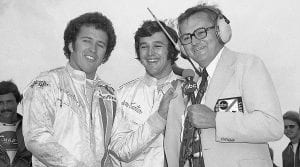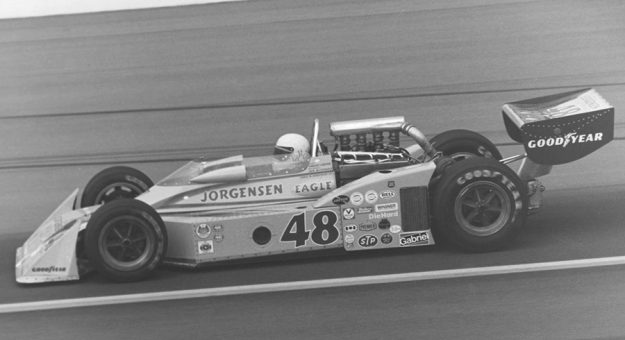A broken suspension component during an Indy car test at Phoenix Raceway in November 1977 badly injured Carter’s right leg, but he was back on track by March.
“It kind of set me back quite a bit because it damaged some nerves in the middle of my right leg, so I couldn’t really work the throttle with my ankle anymore,” he explained. “We had to come up with a different way of working the throttle and had to get those muscles to where they would work the throttle and be able to do it correctly. That had a lot to do with getting the right return spring on the rear-engine stuff and especially on the upright stuff that I was still running — the sprint cars, midgets and Silver Crown cars.”
Between 1972 and 1980, Carter won 70 USAC features and became the first driver to claim the USAC Triple Crown by earning championships in each of the sanctioning body’s three divisions. He earned the USAC midget crown in 1972, USAC sprint car titles in 1974 and ’76 and capped it with the USAC Silver Crown championship in 1978.
“I was a little surprised that no one ahead of me had done that, and I was kind of surprised that it took so long for somebody to do the same thing after I did,” Carter noted. “It wasn’t really something I was striving for when I did it. I won the midget championship and started running more sprint cars and won the first sprint car championship, then probably wouldn’t have won the second championship if it hadn’t been for the fact that Dan Gurney cut the Indy car season short on me, which gave me more time to run sprint cars that year.

“After my injuries at Phoenix, to come back and win the Silver Crown title in ’78 was a pretty major accomplishment because it was hard to work the throttle, especially when the tracks were rough.”
Carter then turned his focus to Indy car racing where he made 179 starts between 1974 and 1994. He won the Michigan 500 in 1981, sat on the pole for the Indianapolis 500 in 1985 and recorded his best Indy finish of third in 1982.
He tried his hand at stock car racing during the later stages of his career and Carter ran his final major race — a NASCAR Cup Series event at Pocono (Pa.) Raceway — on June 11, 1995.
“The fact that you kept having to bring money to the table to get a ride,” Carter responded when asked about his decision to step away from driving at age 45. “When I got my ride with Fletcher, all I brought was my helmet bag. Times changed quite a bit. Just to stay in the sport you had to bring some money and I wasn’t that good at securing money.”
Since hanging up his helmet, Carter has continued to be involved in Indy car racing as a driver coach and spotter. This season, he is working with Ed Jones at Dale Coyne Racing.
Carter and his wife, Carla, have been married for 46 years. They still reside in Brownsburg, Ind., and have two sons — Cole and Dane. The two boys dabbled in sprint car and midget racing for a time and both are still involved in the sport as spotters.
It’s been more than 60 years since those May afternoons in Speedway, Ind., but Pancho Carter concluded by saying, “I’ve been hanging out at the speedway ever since.”
